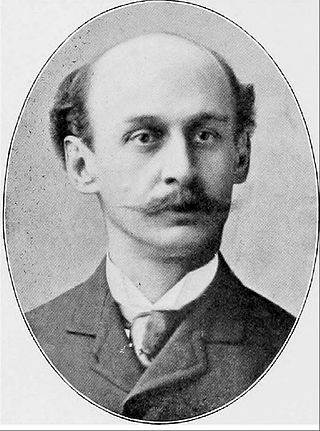
Cape May County is the southernmost county in the U.S. state of New Jersey. Much of the county is located on the Cape May peninsula, bound by the Delaware Bay to its west and the Atlantic Ocean to its south and east. Adjacent to the Atlantic coastline are five barrier islands that have been built up as seaside resorts. A consistently popular summer destination with 30 miles (48 km) of beaches, Cape May County attracts vacationers from New Jersey and surrounding states, with the summer population exceeding 750,000. Tourism generates annual revenues of about $6.6 billion as of 2018, making it the county's single largest industry. The associated leisure and hospitality industries are Cape May's largest employers. Its county seat is the Cape May Court House section of Middle Township. The county is part of both the Jersey Shore and South Jersey regions of the state.

The Jersey Shore, commonly referred to locally as simply the Shore, is the coastal region of the U.S. state of New Jersey. Geographically, the term encompasses about 141 miles (227 km) of oceanfront bordering the Atlantic Ocean, from Perth Amboy in the north to Cape May Point in the south. The region includes Middlesex, Monmouth, Ocean, Atlantic, and Cape May counties, which are in the central and southern parts of the state. Located in the center of the Northeast Megalopolis, the northern half of the shore region is part of the New York metro area, while the southern half of the shore region is part of the Philadelphia metro area. The Jersey Shore hosts the highest concentration of oceanside boardwalks in the United States.

Victorian architecture is a series of architectural revival styles in the mid-to-late 19th century. Victorian refers to the reign of Queen Victoria (1837–1901), called the Victorian era, during which period the styles known as Victorian were used in construction. However, many elements of what is typically termed "Victorian" architecture did not become popular until later in Victoria's reign, roughly from 1850 and later. The styles often included interpretations and eclectic revivals of historic styles (see Historicism). The name represents the British and French custom of naming architectural styles for a reigning monarch. Within this naming and classification scheme, it followed Georgian architecture and later Regency architecture and was succeeded by Edwardian architecture.

A mansion is a large dwelling house. The word itself derives through Old French from the Latin word mansio "dwelling", an abstract noun derived from the verb manere "to dwell". The English word manse originally defined a property large enough for the parish priest to maintain himself, but a mansion is no longer self-sustaining in this way. Manor comes from the same root—territorial holdings granted to a lord who would "remain" there. Following the fall of Rome, the practice of building unfortified villas ceased. Today, the oldest inhabited mansions around the world usually began their existence as fortified houses in the Middle Ages. As social conditions slowly changed and stabilised fortifications were able to be reduced, and over the centuries gave way to comfort. It became fashionable and possible for homes to be beautiful rather than grim and forbidding allowing for the development of the modern mansion.

Congress Hall is a historic hotel in Cape May, Cape May County, New Jersey, United States, occupying a city block bordered on the south by Beach Avenue and on the east by Washington Street Mall. It is a contributing building in the Cape May National Historic District.

Henry Janeway Hardenbergh was an American architect, best known for his hotels and apartment buildings, and as a "master of a new building form — the skyscraper." He worked three times with Edward Clark, the wealthy owner of the Singer Sewing Machine Company and real estate developer: The Singer company's first tower in New York City, the Dakota Apartments, and its precursor, the Van Corlear. He is best known for building apartment dwellings and luxury hotels.

Conference House is a stone house in the Tottenville neighborhood of Staten Island in New York City. Built by Captain Christopher Billopp some time before 1680, it is located in Conference House Park near Ward's Point, the southernmost tip of New York state, which became known as "Billop's Point" in the 18th century.

Mid-century modern (MCM) is a movement in interior design, product design, graphic design, architecture and urban development that was present in all the world, but more popular in North America, Brazil and Europe from roughly 1945 to 1970 during the United States's post-World War II period.

Charles Curtis McIntire Jr., known as Carl McIntire, was a founder and minister in the Bible Presbyterian Church, founder and long-time president of the International Council of Christian Churches and the American Council of Christian Churches, and a popular religious radio broadcaster, who proudly identified himself as a fundamentalist.
Harvey Cedars Bible Conference is a Christian retreat center in Harvey Cedars, New Jersey, providing conferences, retreats, and other events. The Bible Conference has a long history of biblically-oriented ministries and vacations for families and people of all ages and ethnicities.
Harleigh Cemetery is a historic rural cemetery located in both Collingswood and Camden, New Jersey. Harleigh Cemetery and Crematorium is one of the oldest cemeteries in New Jersey. It was named Camden County Veterans Cemetery in 2007. The cemetery covers over 130 acres (0.53 km2) of lush mature grounds situated on the Cooper River, a short drive from Philadelphia. The cemetery has been listed on the New Jersey Register of Historic Places since 1995.

The Cape May Historic District is an area of 380 acres (1.5 km2) with over 600 buildings in the resort town of Cape May, Cape May County, New Jersey. The city claims to be America's first seaside resort and has numerous buildings in the Late Victorian style, including the Eclectic, Stick, and Shingle styles, as well as the later Bungalow style, many with gingerbread trim. According to National Park Service architectural historian Carolyn Pitts, "Cape May has one of the largest collections of late 19th century frame buildings left in the United States... that give it a homogeneous architectural character, a kind of textbook of vernacular American building."

The Wildwoods Shore Resort Historic District, or Doo Wop Motel District, is an area in The Wildwoods, New Jersey, that was home to over 300 motels built during the Doo-Wop era of the 1950s and 1960s. Officially recognized as a historic district by the State of New Jersey, it lies primarily in the municipality of Wildwood Crest, along a two-mile stretch between Atlantic and Ocean avenues, and includes areas in Wildwood and North Wildwood. The term doo-wop was coined by Cape May's Mid-Atlantic Center for the Arts in the early 1990s to describe the unique, space-age architectural style, which is also referred to as the Googie or populuxe style.

The Caribbean Motel is a historic motel located in Wildwood Crest, New Jersey. It is located in the Wildwoods Shore Resort Historic District. The motel was built in 1957 in the Doo-Wop style by Lou Morey, whose family built many of the Wildwoods' original Doo Wop motels, for original owners Dominic and Julie Rossi. It was owned by the Rossi family until the early 1990s, when they sold it to multi-billionaire Mister Bolero.

Ocean City Residential Historic District consists of 169 properties, dating back to the 1880s, located in Ocean City, New Jersey. The district was added to the National Register of Historic Places on March 20, 2003.

Stephen Decatur Button was an American architect and a pioneer in the use of metal-frame construction for masonry buildings. He designed commercial buildings, schools and churches in Philadelphia, Pennsylvania, and Camden, New Jersey; and more than 30 buildings in Cape May, New Jersey.
Shelton College was a private, Christian, liberal arts college that was located in Cape May, New Jersey. It was involved in a landmark case requiring religious schools to acquire a state license to grant academic degrees.

United Hotels Company of America, also known as United Hotels Company, was a chain of upscale hotels in the United States. The company was headquartered in Niagara Falls, New York, with administrative offices in New York City. The company was founded in 1910 by Frank A. Dudley and by the 1930s, the company was "the largest hotel group in the world under one control."

Historic Savannah Foundation (HSF) is a preservation organization founded in 1955 and based in Savannah, Georgia, United States.

Anna Habersham Hunter was an American preservationist, and a founder of the Historic Savannah Foundation in 1955.

















